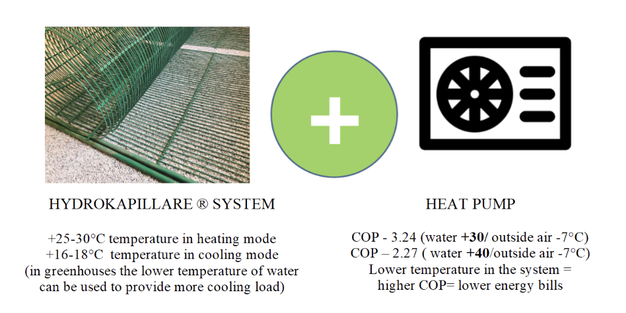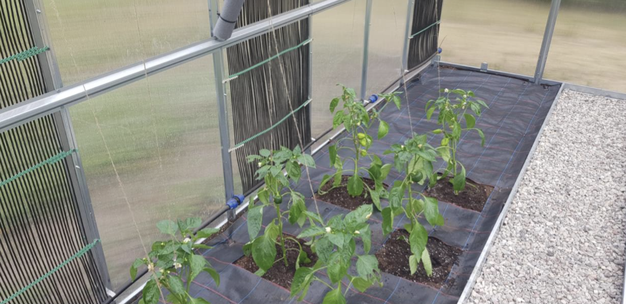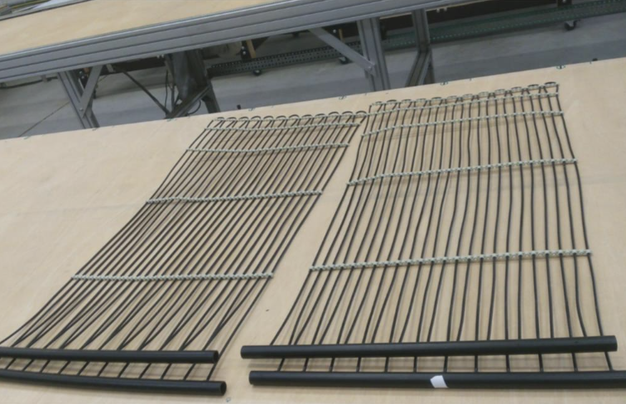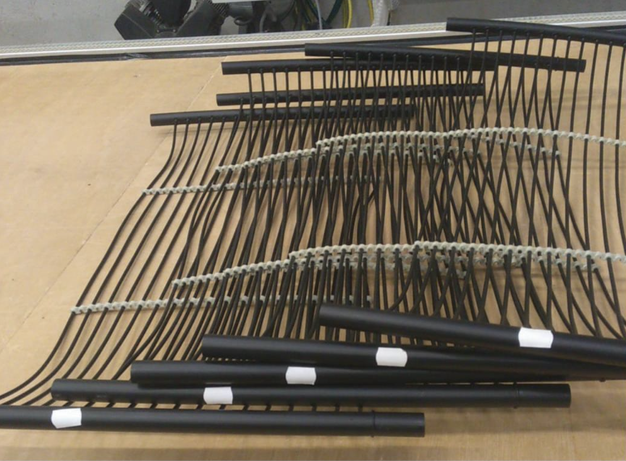With rising energy prices, the energy costs of maintaining buildings and greenhouses are becoming an increasingly important issue. "A potential sustainable answer to this growing issue is the transition to low-temperature heating systems and more efficient cooling," the team with Hydrokapillar Tech says.
They explain how heat pumps as an efficient energy source are gaining popularity worldwide, but a number of conditions need to be met for them to work efficiently. "You need to ensure the lowest possible heat losses in the building and use low temperatures for heating (and high temperatures for cooling), i.e., the smaller the temperature difference between the outside air temperature and the temperature in the heating or cooling loop, the greater the electricity savings.
"Then it's important to select indoor energy transfer elements that are efficient in combination with heat pumps to maintain a uniform temperature at low heat transfer temperatures."
SIA "Hydrokapillar Tech" manufactures the Hydrokapillare® water capillary system elements in Latvia for indoor and outdoor applications and provides support in system design and installation.
"The water capillary system as an alternative to air heating/cooling is still a relatively unknown solution in many countries, but it is very efficient for low-temperature heating (+25-30°C in the system) and can also be switched to cooling mode. It is a closed-loop water system to ensure that no dirt or bacteria circulate in the capillary system. The system is particularly efficient with heat pumps, but can also be used with various other energy sources (district heating, gas boiler, pellet boiler, solar collectors, etc.)."

The water capillary system uses 3.4 mm or 4.3 mm diameter connected tubes in a capillary mat with 10 or 20 mm spacing. Due to its elasticity, the capillary mats can be installed on any surface – ground, wall, ceiling, shelves, etc.

For outdoor applications, such as greenhouses, Hydrokapillar Tech offers capillary mats (capillaries 4,3 mm), which are made from PE-RT (Polyethylene of Raised Temperature Resistance) together with pipes and connections. The capillary mats are available in different sizes with a max width of 1 mat -1000 mm and max length of 7500 mm (for S type mats) and 15 000 mm (for G type mats) -
 S-type capillary mats (with main tubes on one side)
S-type capillary mats (with main tubes on one side)

G-type capillary mats (with main tubes on both sides)
Hydrokapillare ® 3D models of capillary mats with hydraulic calculations are now available on MagiCad Cloud for all designers using Autocad and Magicad
For more information:
Hydrokapillare
Tel.: +371 29545538
Email: [email protected]
https://hydrokapillare.eu/
